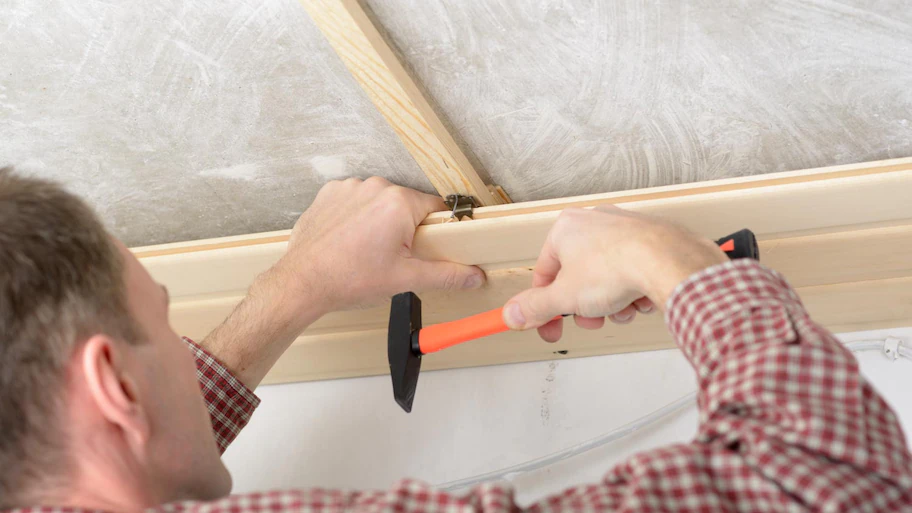Transforming your space with a beautiful tongue and groove ceiling is an excellent way to add character and charm to your home. However, beyond the cost of materials, you must also consider the labor cost to install a tongue and groove ceiling. In this article, we’ll explore the various factors that influence the labor cost and provide insights into what to expect when undertaking this home improvement project.

Understanding Tongue and Groove Ceilings
Before delving into labor costs, let’s clarify what a tongue and groove ceiling is. This type of ceiling features planks that have a unique interlocking system, with one side (the “tongue”) fitting into the groove of the adjacent plank. This design creates a seamless, visually appealing surface that’s often used to give a room a cozy and rustic ambiance.
1. Project Complexity
The complexity of your tongue and groove ceiling project is a significant factor in determining labor costs. Factors like the ceiling’s height, slope, and any irregularities in the existing ceiling can all impact the complexity of the installation. Additionally, if you plan to incorporate decorative features or incorporate lighting fixtures, these factors will also affect labor costs.
2. Preparation Work
Preparing the space for installation is a crucial step in the process. This may involve removing an existing ceiling, such as a drop ceiling or drywall, or making necessary repairs to the current ceiling. The condition of your existing ceiling will dictate the amount of preparation work required, and this, in turn, will influence labor costs.
3. Labor Rates
Labor costs can vary significantly based on your location and the experience of the contractors you hire. In areas with a higher cost of living, you can expect higher labor rates. Experienced contractors typically charge more for their expertise, but their skill and precision can result in a more polished finished product.
4. Installation Method
There are various installation methods for tongue and groove ceilings, each with its own labor cost. The two most common methods are:
- Blind Nailing: In this method, nails are driven through the tongue of each plank, hiding the nail heads from view. This technique is more time-consuming but creates a seamless appearance.
- Face Nailing: With face nailing, nails are driven through the face of each plank, which is visible after installation. This method is faster but may not be as aesthetically pleasing.
Your choice of installation method will impact both labor costs and the final look of your ceiling.
5. Finish and Detailing
The type of finish you desire for your tongue and groove ceiling will also affect labor costs. For instance, if you want a stained or painted finish, this will require additional time and effort for the application. Similarly, if you plan to include intricate details or patterns in the ceiling, expect labor costs to increase.
6. Team Size and Duration
The size of the installation team and the estimated duration of the project will contribute to labor costs. More extensive projects that require larger teams and longer timelines will naturally have higher labor expenses.
Read too: What To Do With Water Bubble In Ceiling
Conclusion
Installing a tongue and groove ceiling can be a visually stunning addition to your home, but it’s essential to understand the labor costs involved. The total labor cost to install a tongue and groove ceiling is influenced by various factors, including project complexity, preparation work, labor rates, installation method, finish and detailing, and the size and duration of the team. To ensure an accurate estimate, it’s advisable to consult with experienced contractors and obtain multiple quotes. By doing so, you can plan your project effectively and enjoy the beauty and elegance of your new tongue and groove ceiling.